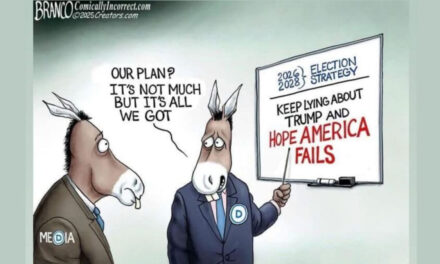
NYC Wants to Give Addicts a ‘Safe Place’ to Inject Illegal Drugs
Lawmakers in New York City, Philadelphia, San Francisco, and Seattle are pushing to establish “safe injection facilities” (SIFs) where addicts can enjoy illegal drugs without fear of the law.
At these facilities, addicts would be allowed to inject opioids under the watchful eye of trained medical professionals armed with naloxone – a drug that can reverse the effects of an opioid overdose. Social workers would also be on hand to speak with users about treatment options.
Supporters say it’s safer for addicts to shoot up under controlled conditions than on the streets, while opponents see the facilities as celebrating drug use.
The very first SIF opened in Vancouver in 2003.
“Right away when the site opened, we saw a visible reduction in open drug use,” says Liz Evans, who oversees a harm reduction program in Harlem. “Research also showed a 45% decrease in the market of public disorder.”
There are now dozens of safe injection sites in operation throughout Canada, Europe, and other countries. Last year, a group of activists in Toronto opened a SIF after a spike of overdose deaths in the city. Local police allowed the illegal facility to operate.
“Without places like this, people are going to continue to die. And this fentanyl – people are getting this stuff laced in their heroin and they don’t know it,” says Leon Alward, a volunteer at the Toronto facility.
“I went from doing a pill every couple days to a $500 dollar a day habit. Before I knew what had happened, I was what I hated so much – a junkie,” says Alward. “We’re here to let them live another day so that they have the opportunity to stop on their own because nobody can stop you until you’re ready to stop.”
Vehement political opposition has so far prevented SIFs from opening in the United States, where drug use is treated as a crime rather than a public health issue.
“It is a crime, not only to use illicit narcotics, but to manage and maintain sites on which such drugs are used and distributed,” argues the Justice Department.
In addition to the legality issue, opponents rightly argue that SIFs exacerbate the drug crisis by removing the incentive for users to quit, creating new users, and boosting the illegal drug trade.
In spite of these arguments, New York City Mayor Bill de Blasio is pushing to open four SIFs in the city. If approved, the facilities would open for a trial period of one year following a 6-12 month community outreach program. City officials in Philadelphia approved a vague program in February, calling for potential investors interested in opening SIFs in the city.
Philadelphia District Attorney Larry Krasner says he would have no problem allowing such facilities to operate. “What will we do? We will allow God’s work to go on. We will make sure that idealistic medical students don’t get bused for saving lives and that other people who are trying to stop the spread of disease don’t get busted.”
—
Heroin and opioid overdose deaths have been on the rise since 2012. In 2016, nearly 65,000 Americans died from drug overdoses. Those numbers were higher in 2017 and will be even higher in 2018.
The way I see it, setting up SIFs in the US is like taking the easy way out. The safe injection facility in Vancouver likes to brag about stopping more than 6,000 overdose deaths since it opened, but these overdoses would not have happened if users were sent to rehab instead of shooting up at a clinic.
In my opinion, enabling addicts to continue taking a drug that might kill them is not a solution to the problem – it’s admitting defeat.
Editor’s note: This crazy liberal idea flies in the face of all reasonable psychology and human behavior. Whatever you subsidize you get more of.























y'all are idiots, ones I suspect have never undertaken a high level negotiation. You can not expect to negotiate with…
Ernie seems upset over a being a chump for a typical Trump pump and dump, go figure. Over 100 terrible,…
Meltdown. Troll. Noem.
Noem.
Over reaction is your stock and trade, Larry. The Democrats are the ones who through no guilt of their own…